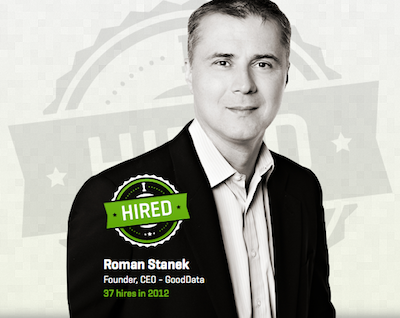Business is about people. What do they want? What do they make? How do buyers and sellers meet at Market Street? The rub is, too many Americans are being excluded from business – involuntarily. This is involuntary deadweight loss; involuntary to the business owners, who currently have over 3.5 million open jobs they want filled; and involuntary to the 18+ million Americans (12m+ unemployed and 6m+ underemployed), who are actively seeking more work. Let them produce!
The employers want to hire, the worker wants to work, but the employer and worker are not meeting on Market Street – so to speak – the America labor market has significant search friction. This bothers me:
- The overall time to hire is estimated at 96 days! (Luxottica Group)
- Hiring for a government job takes an average of 105 days! (Performance.gov)
- If all 3.5 million open jobs would be filled today, Unemployment rate would decline by over 3% (Clinton Global Initiative)
- 80% of businesses report difficulty hiring (Bersin & Associates)
Recovery starts at every every small business in every small town on Market Street. Increased hiring at Google, McDonalds, Facebook, and Starbucks is great, but it does not affect the livelihood of majority of our workforce. Business with less than 500 employees employ over half the population, and more importantly, over the last 17 years, small businesses have generated 65% of net new jobs (U.S. Small Business Administration).
- Small firms pay a median of $3,665 in recruiting cost per hire, compared with $1,949 per hire at companies employing 10,000 employees or more (Bersin & Associates)
It used to be only big businesses could afford technology designed just for sourcing and managing candidates. There was no free recruiting software. It used to be that knowledge of a businesses’ day to day operations, compensation packages, and company values could not be found with a simple google search. There was no Glassdoor. It used to be that you would only target candidates who read your local paper. There were no Monster. It used be that you needed someone full time in order to research the history of a candidate. There was no Linkedin. As Zero Unemployment Founder Jerome Ternynck said, “How can a billion people be on Facebook, and a growing small business can’t find the regional sales manager that they need?”
What I am saying is, we now live in the social web. And if you need someone to do a job, all you have to do is say, “Got Jobs.”
- Take Credit for the Jobs You Create with SmartRecruiters’ Got Jobs? Campaign by TechCrunch’s Anthony Ha
- Time to Hire! – Not a Metric, A Call to Action for All of US! by Jason Averbook
- A Social Push:







